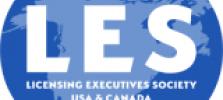COVID-19 Technologies Licensed Globally Through WHO Program Win LES Deals of Distinction Award
NIAID TTIPO’s extraordinary efforts in “COVID-19 Technologies Licensed Globally Through WHO Program” was recognized by the Licensing Executives Society (U.S.A. & Canada) in 2022 with a Deals of Distinction Award in the Industry-University-Government Interface Sector. This award acknowledged the collaborative efforts put forth by the WHO, Medicines Patent Pool (MPP) and the NIH for COVID-19 technologies licensed globally through the WHO program.








